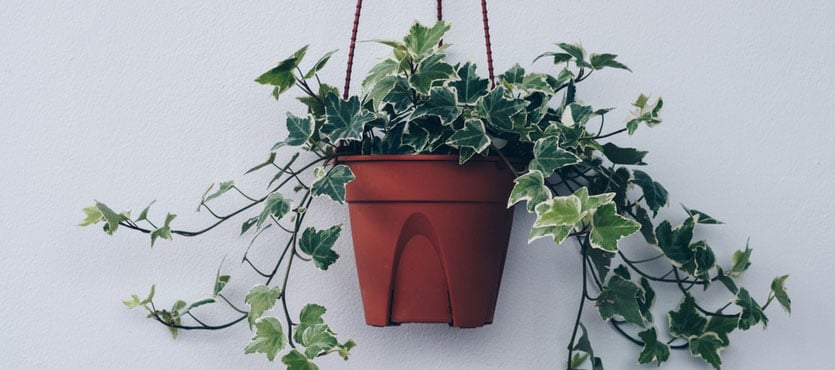Do you have plants around your home or business that are toxic to animals and children? You might not think so, but chances are that you might. A number of the most commonly used plants rank high in toxicity. You’ll want to keep the following plants away from pets and children – doing so could help you avoid a trip to the emergency room.
Common Plants That Are Toxic
Devil’s Ivy
The name of this pretty plant, commonly used to spruce up indoor spaces, says it all. Also known as Pothos, this leafy vine may also be referred to as “assorted foliage” at certain garden centers.
While this plant is easy to care for, it is not safe to eat or lick. While touching the plant will not cause any adverse reaction, consuming the plant will cause vomiting and swelling.
Peace Lilies
Easily one of the most popular flowering houseplants, Peace Lilies are beautiful but toxic. Especially popular in the spring time, they are low maintenance and have pretty dark leaves paired with white flowers that pop. Buyer beware, their beauty packs a poisonous punch.
Humans, dogs and cats will develop an adverse reaction if they consume this plant. This plant should be reserved to homes where adults and older children reside with no pets. They are 100% safe to touch and only become dangerous when consumed.
Sago Palm
We recently had to take one of these down in our backyard after discovering how toxic it is to pets. While small versions of these ancient plants look great indoors and outdoors, they are incredibly toxic to pets and children.
Known as the plant’s ancient defense mechanism – one taste of this plant is toxic. No matter what part of the plant is ingested, it can lead to vomiting, diarrhea and in the most severe cases, liver failure.
Poinsettia
This plant is most common around Christmastime and is often given as a gift. Yet, beware because it is toxic to children and animals. Ingesting this plant will lead to nausea and vomiting. It is especially dangerous for cats and dogs. It doesn’t take ingesting the plant to cause issue, simply being exposed to the sap of the plant can cause your skin to become red and irritated.
Caladium
Another popular plant found both inside and outside is caladium, also known as Elephant Ear. This pretty plant comes in a wide range of colors and has velvety leaves that are tempting to touch. Kids and animals may also find them tempting to eat – and that’s not a good thing because caladium is toxic.
Eating these leaves will lead to swelling, eye pain, vomiting, and diarrhea. If you must have these plants around, make sure they are high up on shelves where kids and dogs can’t reach them (don’t forget to keep them away from your kitties too!).
Cylclamen
This dark and leafy plant with brightly colored flowers (ranging from red to white) is popular for many reasons – including its beauty. If consumed, this plant can cause diarrhea and vomiting.
English Ivy
The petite pointed leaves on this plant make it a popular choice when seeking a more delicate looking plant. Plus, people like how the fine vines create a loose tangle that stops it from draping as much as other ivy varieties.
Luckily, the way that the vines hang on this plant may make it easier to keep out of reach from small children and pets, which is something you absolutely want to do. After all, ingesting this pretty plant will cause a range of negative symptoms including weakness, throat swelling, vomiting, rash, dermatitis, and ataxia.
Common Plants That Cause Skin Rashes & Irritation
- Agapanthus
- Cactus
- Aster
- Chrysanthemums
- Daises
- Clematis
- English Ivy
- Ficus
- Pothos Ivy
- Primerose
- Sumac
- Schefflera
Common Plants That Cause Digestive Upset
- Boxwood
- Crocus
- Amaryllis
- Cyclamen
- Holly
- Morning Glory
- Juniper
- Pothos Ivy
- Schefflera
- Poinsettia
Plants That Cause Serious Conditions, Including the Risk of Death
- Rhododendron
- Sago Palm
- Mistletoe
- Oleander
- Larkspur
- Lantana
- Hyacinth
- Hydrangea
- Foxglove
- Dumb Cane
- Daffodil
- Cyclamen
- Cala Lily
- Boxwood Azalea
- Delphinium
The World’s Deadliest Plants
Some plants are considered so dangerous that they are listed under the world’s deadliest plants – it’d be harder to accidentally plant one of these in your home or garden. For instance, the Water Hemlock is considered “the most violently toxic plant in North America.” Other plants to make the list include:
- Deadly Nightshade
- White Snakeroot
- Rosary Pea
- Oleander
- Tabaco
Keep in mind, the plants listed above are only some of the many toxic plants out there. Always research a plant before putting it in your home or garden, especially if children or pets will have easy access to it. It’s always better to be safe than sorry.
Need a planter for your plants? Shop our wide range of long-lasting, durable and sustainable planters.

